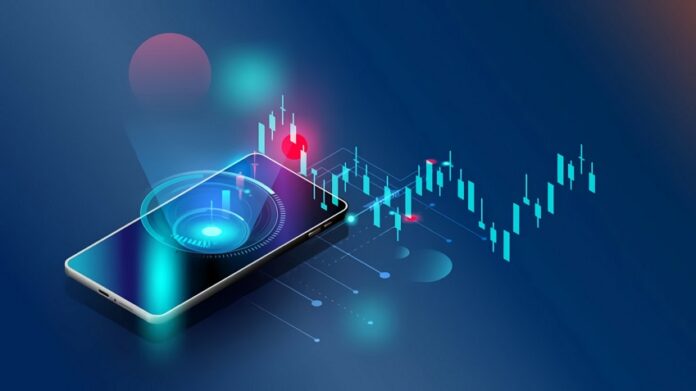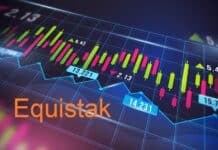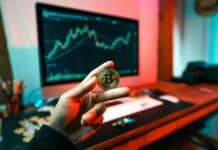There is a good chance that you are familiar with NFTs if you follow the cryptocurrency industry or spend much time on social media. Tokens that cannot be exchanged for other tokens, known as non-fungible tokens (NFTs), have recently become a hot commodity, with some fetching prices in the millions.
Find out what an NFT is, how to collect them, how to trade them, how to mint new ones, and how to sell them in this detailed guide.
What Does “NFT” Stand For, and What Exactly Is An NFT?
A non-fungible token (NFT) is a digital token that stands in for another entity, either digital or physical. As just a few examples, NFTs can stand in for anything from a visual work of art to a musical track to a virtual item in a video game.
To put it simply, an NFT is a digital asset that “lives” on a blockchain but has the same characteristics as a physical asset in terms of how it is seen, handled, and used. NFTs are often bought and sold via the internet utilizing cryptocurrencies like ether (ETH) or stablecoins like Tether as the medium of exchange (USDT).
A non-fungible token is one that cannot be exchanged for another token of the same value since each token is distinct from the others. This is in contrast to a currency, in which each unit of the currency is identical to the others.
Despite the fact that the vast majority of NFTs have existed on the internet as digital works, many people still don’t understand why somebody would pay millions of dollars to get what they could readily obtain by downloading or taking a snapshot. The simplest explanation is that the original item is owned by an NFT buyer. Moreover, NFTs contain built-in authentication that can be used as evidence of ownership.
How Does NFT Work?
Almost all NFTs are built within the Ethereum network. The Ethereum blockchain’s native cryptocurrency, Ether (ETH), has a market cap that is second only to Bitcoin’s. Despite Ethereum’s dominance in the NFT market, other blockchains do allow for the creation and trading of NFTs.
NFTs are created using digital things, which can be either tangible or intangible. These objects can be mined to produce NFTs. Anything from paintings and sculptures to albums and playlists, designer outfits and video highlights and animated GIFs. Indeed, even tweets can be traded for NFTs.
NFTs are similar to traditional art transactions, only the final product is a digital file rather than a physical piece of wall art. Possibly both of these things at once.
Each NFT has a distinct cryptographic identifier, making it simple to establish ownership and facilitate the exchange of tokens.
What Are Non-Fungible Tokens Used For?
NFTs are on track to achieve the same as the blockchain, which has a wide range of application cases across a variety of industries.
NFTs, for instance, may find significant application in the field of digital identity. The blockchain can be used by NFTs to record both identifying and ownership information. Thousands of people throughout the world will benefit from the increased data privacy and security that this provides.
NFTs are also quickly becoming “a thing” in the gaming industry. Use of NFTs in video games can be a great way to give players incentives and give them a sense of ownership over virtual items like skins and weaponry. Some of the most popular blockchain games, including Axie Infinity, Sorare, and Decentraland, have implemented NFTs within the games themselves, and this move has resulted in a surge of interest and adoption.
Advantages of NFTs
NFTs have undeniably added a new dimension to online interactions. The question is, though, what benefits do NFTs offer.
- Ownership
Built-in ownership verification is a major plus for any NFT. Due to the immutability of NFT data following a purchase, ownership of these tokens may be traced back to a specific account or individual. However, if the owner of an NFT asset decides to sell it, he or she can do so quickly and easily through the application of smart contracts.
- Authenticity
The blockchain is a digital ledger that is decentralized and can’t be changed. Every NFT that is “minted” on the blockchain and enters circulation also has its own distinctive characteristics. The blockchain’s inherent authenticity as a technology makes it extremely difficult, if not impossible, to generate counterfeit NFTs.
- Transferability
NFTs also have the added benefit of being portable, which can open up new opportunities for use. They are liquid and may be traded on NFT exchanges like OpenSea.io. NFTs are valuable, but only if they are truly one-of-a-kind.
- Creation of Economic Opportunities
With NFTs, creators keep all of the money made from the sales of their works. Further, they may implement smart contracts that would grant them royalties upon the NFT’s resale by the new owner.
How to Purchase NFT?
If you’re looking to get some NFTs, your best bet is to visit an NFT marketplace.
However, you’ll need more than just a marketplace. You’ll need a cryptocurrency wallet (like Trust Wallet or MetaMask) that supports NFTs in order to make a purchase of a non-fungible token (NFT).
Assuming you don’t already have some, your initial move should be to get some cryptocurrency. Your NFT service provider’s cryptocurrency support will determine which coin you can buy. The market for digital currencies is dominated by exchanges where they can be bought and sold. After that’s finished, you can transfer the cryptocurrency to your personal wallet.
The following step is to connect your wallet to an NFT marketplace. Verify that you’ve landed on the correct webpage. You should also have some extra cryptocurrency in your wallet to use for paying transaction fees.
When shopping for NFTs, you may want to check out OpenSea, Foundation, or Rarible, three of the most well-known exchanges in the industry.
How to Mint an NFT? What Does Minting Means in NFT?
Minting your own NFT is possible on many different sites, and you can even trade them with others. When your digital good is “minted,” it joins the Ethereum network as a non-fungible token (NFT).
Producing simple, non-fungible tokens requires little effort.
To begin, pick a blockchain platform; options include Ethereum, Binance Smart Chain, Solana, Stacks, and others. Keep in mind that each blockchain serves a slightly different function, so it’s important to pick the one that’s right for you.
To mint a digital asset, you’ll need access to the blockchain network, the asset itself, a digital wallet, and cryptocurrency to cover the costs of minting.
Transaction fees on Ethereum are quite high, despite the fact that the platform has a sizable user base and is essential in the development of NFTs as we know them today. As a result, customers have to pay ridiculously high prices for even minor transactions.
But Binance Smart Chain has reduced fees and far quicker transaction times. While it’s still new to consumers, its NFT marketplaces are expanding rapidly. In the same way, NFTs on Solano, Cardano, and Stacks are equally legitimate.
What Is An Example of a Non-Fungible Token (NFT)?
Most people’s first thoughts about NFTs probably involve crypto art or blockchain games. However, the potential applications of NFTs extend far beyond those two markets.
The following are some applications of NFTs outside of crypto art and digital games.
- Sport Collectibles
NBA Top Shot is a non-fungible token (NFT) ecosystem based on basketball that lets users exchange and collect digital highlights from the National Basketball Association (NBA) and Women’s National Basketball Association (WNBA).
- Ticketing
Ticket stubs and other proofs of admission to concerts and other events can also be used to create non-fungible tokens. The security measures implemented will make it impossible to forge any given ticket.
- Clothing
Designer and high-end fashion labels can also benefit from NFTs. To verify the authenticity of a Gucci handbag, for instance, the owner could scan a QR code on the tag and receive a unique token that could be stored in their digital wallet.
- Domains
Numerous domain names are now being issued and traded on NFT exchanges to meet the demand from people and companies for transparently owned domain names.
How much are NFTs worth?
Theoretically, anyone can create a non-fungible token and sell it as a tokenized version of their work. But how valuable is an NFT, anyway? The three main factors that establish an NFT’s value are rarity, utility, and tangibility.
- Rarity
Value in NFTs is determined by the skill of the creator, the effect it would have on the consumer, and the method employed, just as it is in the case of traditional art. The uniqueness and rarity that give NFTs their intrinsic value also contribute to their market value.
- Utility
Because of their versatility, certain NFTs are invested in despite not being directly related to the intended usage. This makes them more than just collectibles, since they may also be used as tokens in many games. In a digital world like Guild of Guardians, such NFTs can provide players with a decisive edge.
- Tangibility
In some cases, NFTs correspond to tangible objects. As a result, such NFTs gain tangible value supported by the absoluteness of ownership. Even though ownership rights are protected by NFTs, that doesn’t guarantee the object will be rare or in great demand. However, the value of an item depends on the happiness it brings its owners, its usefulness, and its rarity.
How Is an NFT Different From Cryptocurrency?
The blockchain serves as the foundation for both NFTs and cryptocurrencies. And that’s about the only thing that NFTs and cryptocurrencies have in common.
Coins issued by cryptocurrency projects are often fungible with fiat currencies. As such, one can be traded or swapped for another of the same worth.
Non-fungible tokens (NFTs) differ from cryptocurrencies in that each NFT carries its own digital signature, rendering it unchangeable.





